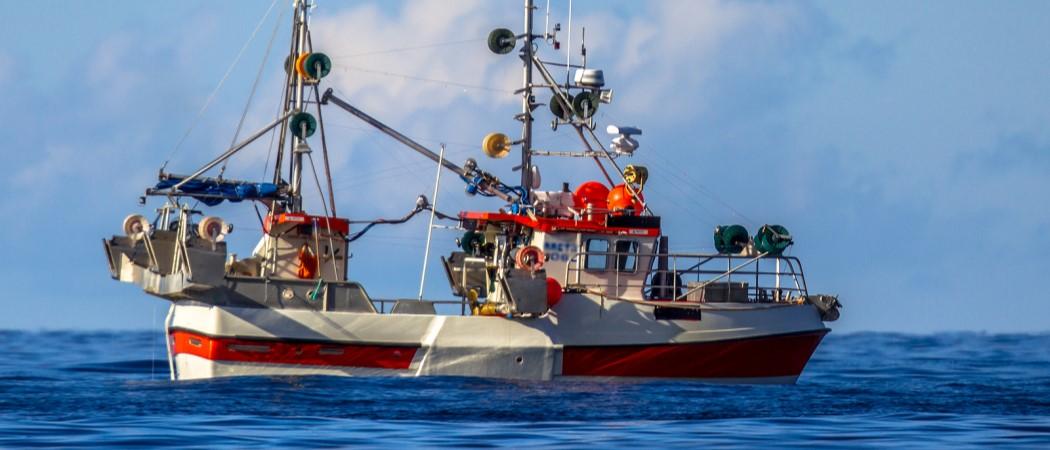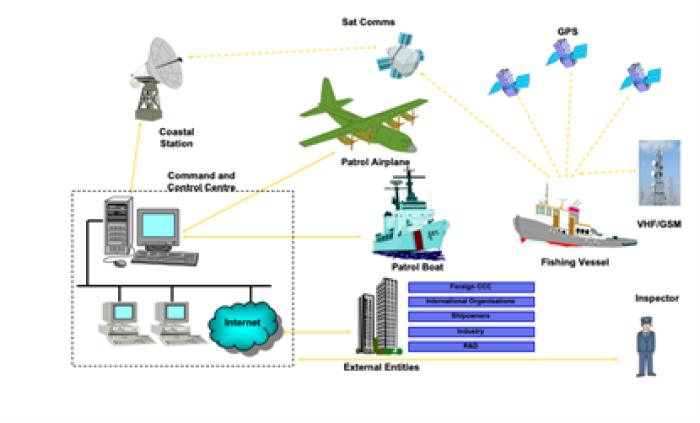How remote electronic monitoring can help to preserve the marine environment

Sustainable Commercial mackerel hook line fishing vessel on blue waters of Norway
What gets measured, gets managed. That’s why the widespread application of remote electronic monitoring (REM) will be key to delivering the EU’s Green Deal.
Although the necessary technological solutions already exist or are being developed, regulatory changes and collaboration between scientists, marine and environmental organisations and policymakers will be required to really harness REM.
By initiating and supporting further REM trials across Europe, the EU can help to develop robust technology and legislation that will realise the full potential of REM and maintain a sustainable environment for future generations. This is particularly true in the marine sector, where REM can make fisheries transparent and seafood traceable.
For the fishing industry, REM was born at INESC in Portugal in 1988 with a technological pilot project (one of the first in Europe and in the world). The results of the pilot have since revolutionised the techniques for monitoring and controlling fishing activities worldwide. Over the past three decades, REM has proved to be an effective tool to acquire data on fishing activity. It has become indispensable in supporting the improvement of fisheries management to make the activity environmentally, economically and socially sustainable.
The original pilot led to the development of a VMS (vessel monitoring system), which can provide the location of a vessel at regular intervals. The VMS can also provide data on its speed and direction, as well as other pertinent information.
Today, the sensing systems have evolved to a point where they can be used to remotely check the activity in progress (via still images and/or video), but existing regulation means there is a lack of legal procedures to allow its widespread use.
Harnessing eyes in the sky
As shown in the image below, each monitored vessel is equipped with an onboard smart unit (known as a blue box), whose main function is to record all relevant data on the ship's behaviour and transmit it via satellite to the command and control centre for processing.
The command and control centre allows the monitoring of the fishing fleet and the remote control of the onboard units. The information stored in the control centre can be relayed to relevant entities, such as the control centre in whose waters the vessel is located, the owner, R&D entities and other stakeholders
Architecture of a VMS System
How to monitor more fishing activity
First applied to medium and large fishing vessels, VMS systems have since been extended to smaller vessel lengths. Now solutions are being discussed, analysed and tested that will apply the concept to artisanal vessels and recreational fishing.
Automated tracking systems are being complemented with powerful tools for monitoring and analysing activity and vessel behaviour, with associated alarms and in full integration with law enforcement authorities. It is now even possible to automatically detect the species and the freshness of fish on board a vessel.
The data captured by these systems can be used for various purposes from risk analysis to the automatic detection of gear and behaviour of ships, while complying with the privacy provisions in the EU’s General Data Protection Regulation.
The importance of partnerships
Back in 1988, the original REM pilot was launched by INESC in partnership with UNISYS Portugal and supported by the Portuguese Secretary of State for Fisheries of Portugal and by the Directorate General for Fisheries - DG XIV of the European Commission.
The original project was called MONICAP ™ (Continuous Monitoring of Fishing Activities) and became one of the first success stories in the innovation and internationalisation of information and communications technology (ICT) and electronics in Portugal, with a significant economic and environmental impact. Taken forward by INOV (an INESC research & innovation spin-off), the project became independent as a spin-off company, XSEALENCE - Sea Technologies, in 2013.
With its long-standing fishing industry, Portugal was a pioneer in promoting fisheries monitoring: it was the first country in Europe to introduce legislation (in 1993), establishing the obligation for fishing vessels to be equipped with continuous monitoring equipment. Only then, inspired by the Portuguese legislative initiative, the EEC issued a regulation establishing a control system applicable to the common fisheries policy. This later evolved to the widespread implementation of systems for continuous monitoring of fishing vessels, via satellite, for the purposes of surveillance and control of fishing activity.
INESC has recently developed new solutions and approaches, encompassing artificial intelligence and advanced sensing, for the monitoring of economic activities taking place at sea. It continues to be active in this field, through national and international cooperation with the various stakeholders, within the scope of R & D + i projects. The goal is to make systems “industry friendly”, thus enabling their acceptance by the various actors in the preservation, exploitation and management of global fisheries resources.
Enabling prosperity and sustainability
In close cooperation with the Portuguese authorities for inspection of the national Exclusive Economic Zone (DGRM) and the national institute for atmosphere and sea research (IPMA), INESC has applied its scientific and technical capacity in ICT and electronics to an array of challenges.
It regards technology as a means to promote EU economic competitiveness alongside social prosperity and environmental sustainability. Just one example of how INESC is developing solutions of international reference, the MONICAP™ project demonstrates the institute's high capacity for research and innovation, following processes from their genesis, including prototyping, demonstration, production and spin-off to the market.
With a refined technological, scientific, social and business vision, INESC focuses on research that will impact the direct economy, while making global human activity more sustainable and efficient.
To know more about the INESC institutes visit the website of the INESC Brussels HUB





 A unique international forum for public research organisations and companies to connect their external engagement with strategic interests around their R&D system.
A unique international forum for public research organisations and companies to connect their external engagement with strategic interests around their R&D system.